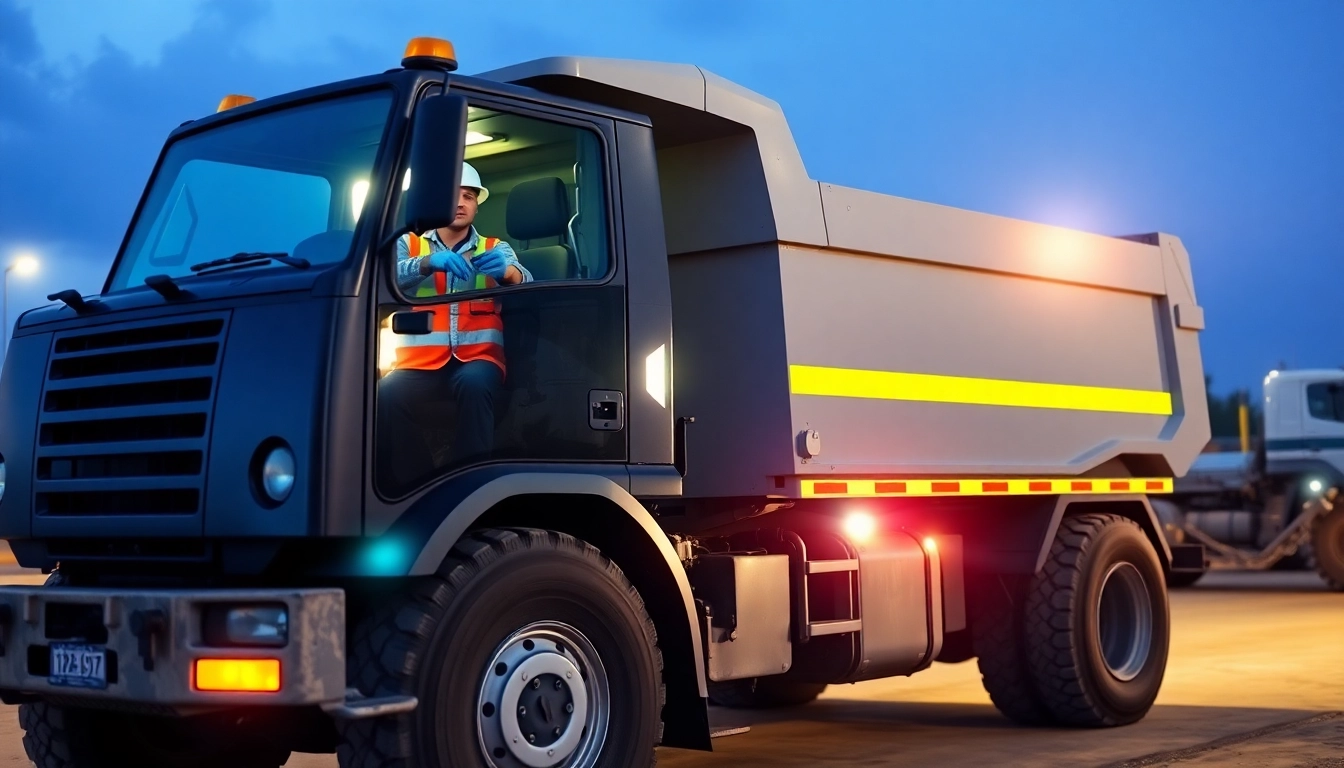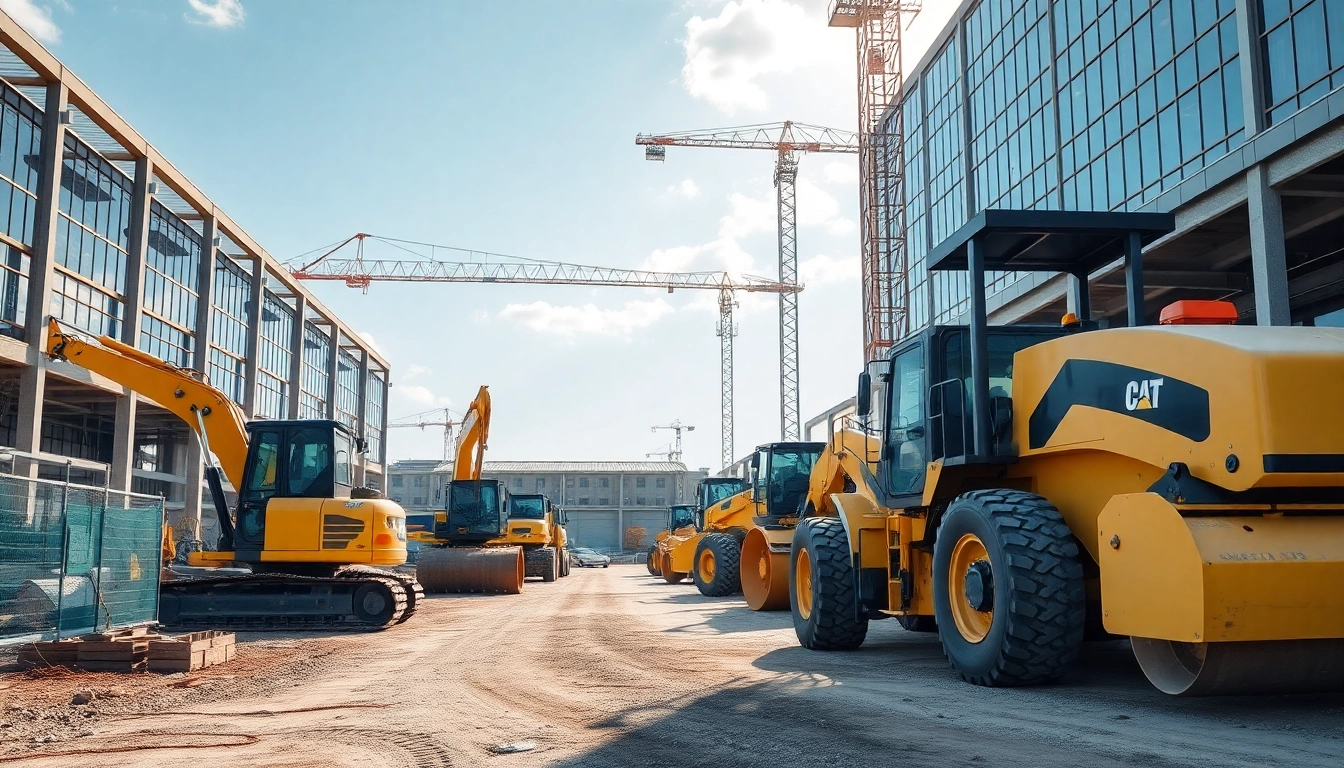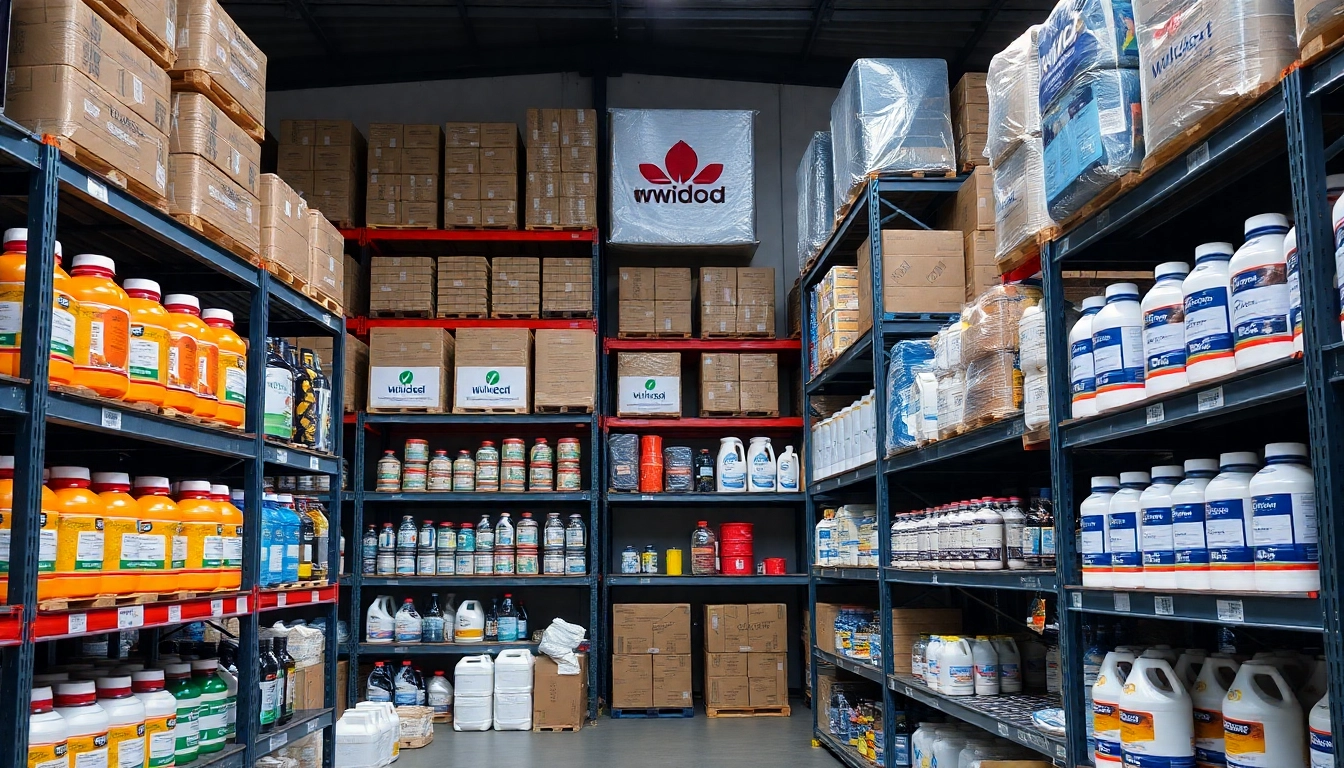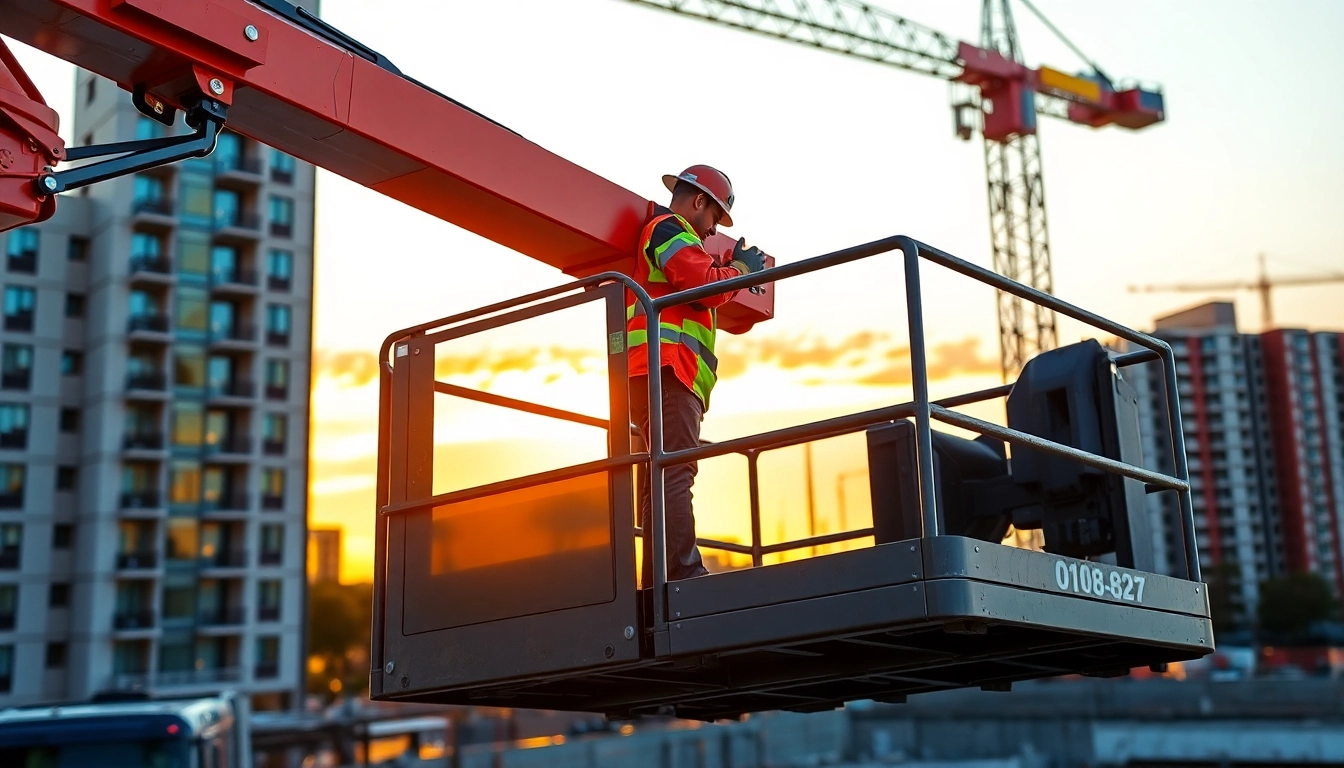Understanding Dumper Types and Their Applications in Rental Services
In the dynamic world of construction, landscaping, and material handling, dumper rentals have become an essential part of efficient project execution. Whether you’re managing a small renovation or a large-scale infrastructure project, selecting the right type of dumper can significantly impact productivity, safety, and cost-effectiveness. With a diverse range of dumper models available for rent, understanding their specifications, applications, and operational advantages is crucial for making an informed choice. If you’re exploring options, you might consider exploring Dumper rental to find the most suitable equipment for your project’s needs.
Mini Dumpers for Tight Spaces and Urban Projects
Mini dumpers, often weighing less than 1 tonne, are designed for maneuverability and ease of use in confined or urban areas where space is limited. These compact machines can access narrow doorways, alleyways, and tight corners, making them ideal for small-scale landscaping, internal renovation projects, or urban infrastructure developments. Their small footprint allows operators to carry out tasks without causing disruption or damage to surrounding structures.
One of the key advantages of mini dumpers is their versatility. Many models feature tipping skips or buckets that can be easily detached or loaded with attachments like shovels to expand their functionality. For example, mini dumpers with a capacity of around 0.25 to 0.5 tonnes are suitable for transporting bricks, soil, or debris, especially in projects with limited access. Their maneuverability not only enhances safety but also reduces labor costs by minimizing manual handling effort.
Practically, mini dumpers are used in residential developments, internal renovations, landscaping designs, and even indoor applications where space constraints demand smaller machinery. Their design often includes features like four-wheel drive or articulated steering, allowing smooth operation across uneven terrain, wet or soft ground, and slopes. Such flexibility ensures they perform reliably across varied environmental conditions commonly encountered in urban projects.
Standard and High Tip Dumpers for Heavy-Duty Construction
For larger construction sites requiring the movement of substantial materials, standard and high tip dumpers offer the power and capacity essential for efficient operations. These dumpers typically range from 1 to 3 tonnes and are designed to handle heavier loads such as gravel, sand, demolition waste, and other bulk materials. Their robust construction and higher tipping heights allow for quick unloading into skips, trucks, or designated disposal areas, thus streamlining workflow and reducing downtime.
High tip dumpers are especially useful in scenarios where materials need to be deposited at an elevated height, such as into bins on upper levels of a site or into high-sided containers. Their hydraulic systems provide controlled tipping and precise unloading, which enhance safety and minimize spillage. Additionally, some models feature fabrications such as steel or polyethylene, ensuring durability under rigorous use.
These models find extensive application in road construction, building foundations, large-scale demolition, and bulk material handling. Their larger engine power and load capacities enable them to operate efficiently over extended periods and distances, which is vital for maintaining project timelines. When selecting such dumpers, considerations around tipping height, tipping mechanisms, and payload capacity are fundamental to optimizing operational performance.
Tracked and Articulated Dumpers for Difficult Terrain
Many construction and landscaping projects occur in challenging terrains—uneven ground, muddy areas, steep slopes, or wet environments—where traditional wheeled dumpers may struggle. Tracked and articulated dumpers are engineered to excel in these conditions. Their continuous tracks distribute weight evenly, providing superior traction, stability, and reduced ground pressure. This makes them ideal for peatlands, forestry sites, dredging operations, and mountain construction projects.
Tracked dumpers often include features like swivel skips or high tipping capacities, enabling them to navigate tight turns and uneven surfaces while efficiently loading and unloading materials. Their articulating joints enhance maneuverability in confined spaces, allowing operators to pivot and turn in limited areas, which is especially valuable on complex terrains.
Furthermore, these dumpers are built for durability, with reinforced undercarriages and high-grade hydraulic systems that withstand harsh environments. They are indispensable where safety and stability are non-negotiable, helping reduce the risk of accidents and equipment damage. When choosing a tracked or articulated dumper, considerations should include track width, ground clearance, tipping height, and overall weight distribution to ensure optimal performance in specific terrain conditions.
Key Factors to Consider When Renting a Dumper
Capacity, Load Limits, and Material Compatibility
Understanding the load capacity is fundamental when selecting a dumper for rent. It ensures the equipment can handle the volume and weight of materials without overloading, which can cause mechanical failures or safety hazards. Typical capacities range from 0.25 tonnes for mini dumpers to over 3 tonnes for larger models. Always evaluate your project’s material type—whether it’s soil, gravel, concrete, or debris—and select a dumper compatible with those materials, considering factors like abrasiveness and moisture content.
Rental Costs, Duration, and Pricing Options
Cost considerations encompass hourly, daily, or weekly rental rates, often influenced by the dumper’s size, features, and the rental provider’s policies. Longer rental periods may offer discounted rates, emphasizing the importance of planning to optimize expenditure. Additional costs such as delivery, collection, fuel, and damages should also be clarified upfront. Understanding these costs helps in budgeting effectively and avoiding unexpected charges, ensuring your project remains financially on track.
Operational Features and Safety Standards
Modern dumpers incorporate advanced operational features such as hydraulic tipping, load sensors, safety interlocks, and ergonomic controls. Safety standards are regulated by authorities, including features like rollover protection, emergency stop buttons, and proper lighting for nighttime work. Ensuring equipment aligns with these standards and that operators are trained to use them responsibly is critical for minimizing accidents and maintaining compliance with health and safety regulations.
Benefits of Choosing a Dumper Rental Over Buying Equipment
Cost-Effectiveness and Maintenance Savings
Purchasing a dumper requires a significant upfront investment and ongoing maintenance costs, including repairs, parts replacement, and routine servicing. Rental options eliminate these expenses, offering a more affordable solution for temporary or project-specific use. Additionally, rentals often include maintenance and breakdown assistance, ensuring your operations are not hindered by unexpected equipment failures.
Access to Latest Models and Technologies
Rental companies continuously update their fleets with newer models featuring the latest technology and safety innovations. This access allows rental users to benefit from improved fuel efficiency, higher productivity, and advanced safety features that may not be feasible to purchase outright. Upgrading equipment per project requirements ensures optimal performance and shortens project timelines.
Flexibility for Multiple Project Sizes and Types
Rental services provide flexibility, allowing you to choose different dumper types and sizes tailored to specific tasks within the same project. This adaptability supports efficient resource allocation, reduces equipment idle time, and helps contractors respond swiftly to changing project needs. Renting also simplifies scaling operations, whether you need additional machinery for peak times or want to switch to different models as the project evolves.
Step-by-Step Guide to Securing Your Dumper Rental
Assessing Project Needs and Equipment Specifications
Begin with a comprehensive assessment of your project requirements. Determine the materials to be transported, volume, spatial constraints, terrain, and operational duration. Match these factors with dumper specifications such as capacity, tipping height, size, and type. Consulting with equipment rental specialists or suppliers can clarify suitable models and ensure you select the right machinery for optimal efficiency.
Finding Trusted Rental Providers and Comparing Quotes
Research reputable rental companies with established safety standards, positive customer feedback, and comprehensive service offerings. Gather quotes from multiple providers, comparing not only prices but also included services like delivery, on-site support, and maintenance. Verify equipment condition and ensure availability aligns with your project schedule. Local providers often have the advantage of quicker turnaround times and personalized service.
Booking, Delivery, and Operational Tips for Maximum Efficiency
Once you’ve chosen your supplier, proceed with booking well in advance, especially during peak seasons. Coordinate delivery times to align with your project schedule, and confirm setup procedures. Prior to operation, conduct safety briefings and ensure operators are trained on specific equipment controls and safety features. Properly maintaining and operating the dumper minimizes downtime and extends equipment lifespan, ultimately contributing to project success.
Measuring Success: Performance Metrics and Best Practices
Monitoring Load Efficiency and Fuel Consumption
Track metrics such as the weight of materials moved per hour, fuel consumption rates, and cycle times to evaluate equipment efficiency. Use data to optimize load sizes, reduce idle times, and maintain fuel management protocols, leading to cost savings. Many modern dumpers come equipped with onboard sensors that facilitate real-time monitoring and reporting.
Ensuring Safety and Compliance During Use
Regular safety checks, adherence to load limits, and correct operating procedures are vital for safe operation. Ensure all operators wear PPE, follow manufacturer guidelines, and understand emergency protocols. Compliance with local health and safety regulations reduces risks and liabilities, fostering a safer work environment.
Post-Use Maintenance and Rental Feedback
After project completion, inspect the equipment for any damages or necessary repairs. Provide feedback to the rental provider regarding performance, which can improve future service and ensure equipment longevity. Proper post-use maintenance also helps you assess the total cost of rental and plan for future needs accurately.



